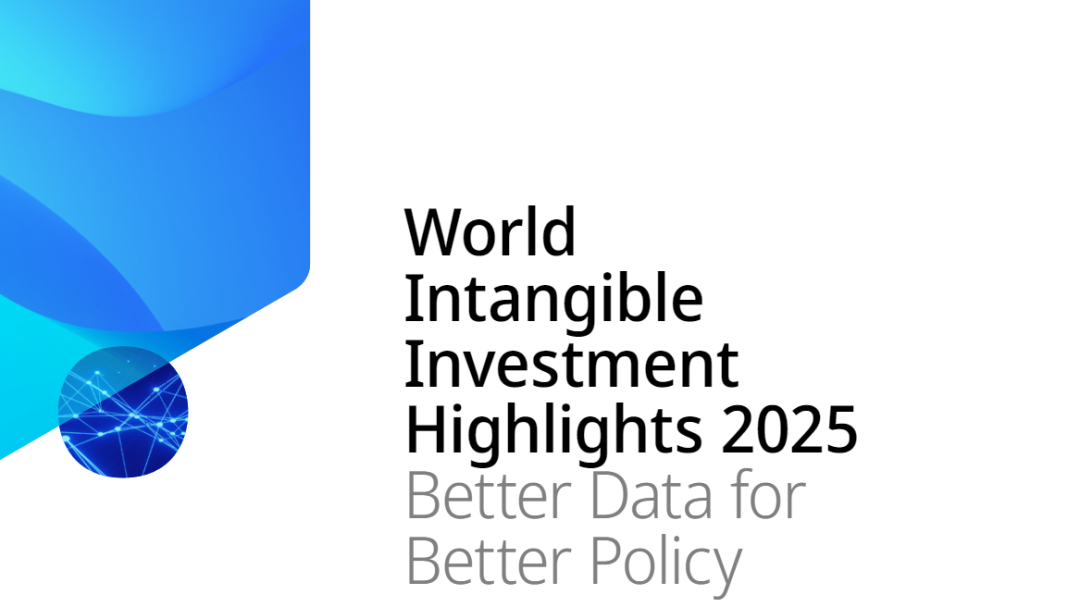
Intangible Assets Emerge as Core Engine of Global Economic Growth
Widening Growth Gap Between Tangible and Intangible Assets. The compound annual growth rate (CAGR) of intangible investments reached 4.1% from 2008–2024, 3.7× higher than tangible assets (1.1%). Since 1995, intangible investments surged 143% while tangible assets grew only 32%. By 2024, global intangible investments hit $7.6 trillion, with increasing economic weight. A pivotal shift occurred in 2008: intangible assets accelerated whereas tangible assets stagnated due to global volatility and rate hikes, plateauing post-2020.
Intangibles as Economic "Shock Absorber"
Amid high inflation, rising rates, and weak tangible investment, intangibles demonstrated resilience—sustaining 23% growth (2020–2024) and driving >12% total investment growth. They mitigated global productivity slowdowns, particularly in service/AI-intensive sectors, through tech upgrades and process optimization.
Multipolar Global Intangible Landscape
Within the global economic landscape, different countries prioritize varying scales and intensities of investment in intangible assets. In 2024, the United States reached $4.7 trillion in intangible asset investment—nearly double the combined total of France, Germany, Japan, and the United Kingdom. Sweden's intangible asset investment accounts for 16% of its GDP, making it the world's most intangible-asset-dependent economy. India achieved nearly 7% annual growth from 2011 to 2022, rapidly catching up from a low baseline.
Developed economies in Europe and America (including the U.S., France, and Germany) consistently lead in intangible asset investment over tangible assets, with the gap widening; Japan experienced a trend reversal: tangible asset investment grew faster before 2020, but intangible asset growth subsequently surpassed it (2020-2023: intangible assets +1.2% annually vs. tangible assets +0.6%). Among emerging economies, Brazil's intangible asset investment grew against the trend (2011-2021: +2% annually), while tangible assets declined by 1% over the same period.
AI Reshaping Investment Structure
Software and data investment leads in growth rate, emerging as the biggest winner. From 2013 to 2022, annual investment in software and databases exceeded 7%, surging past 9% between 2021 and 2022 to become the fastest-growing intangible asset category. This growth directly benefits from AI technology's reliance on data and algorithms.
AI drives a “dual-wave investment” strategy. Tangible investments focus on AI infrastructure—such as chip manufacturing, data centers, and smart factories (where U.S. tech giants like Amazon, Google, and NVIDIA have made massive investments). Intangible investments cover data (training datasets), R&D (AI algorithms), skills (talent training), and processes (organizational transformation), propelling AI from a “technical tool” to a “general-purpose technology” that permeates industries including healthcare, education, and manufacturing.
Critical "Measurement Gap"
Over 60% of intangible asset investments—such as brands, designs, and organizational processes—are not captured in official statistics, leading to their true value being underestimated. This may result in capital misallocation and policy distortions. A core value of this report is to bridge this gap through a global database, providing a foundation for policy formulation.
References
[1] WIPO & London Business School. (2025). World Intangible Investment Highlights 2025: Better Data for Better Policy [R/OL]. Geneva: WIPO. [Accessed: 2025-08-08].




